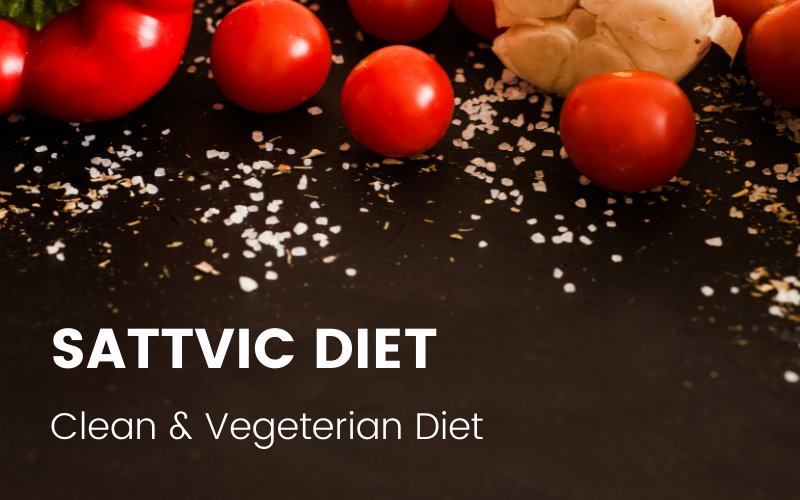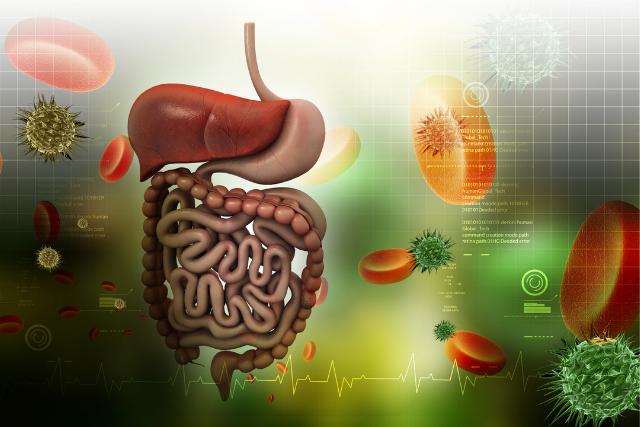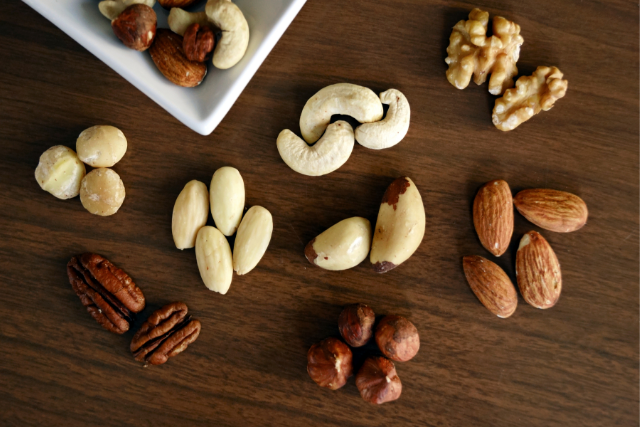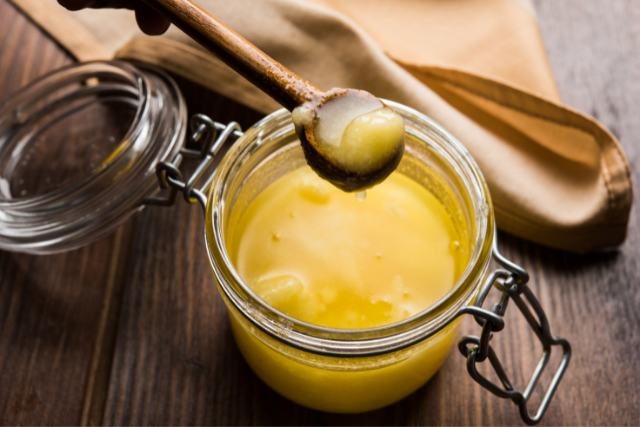Sattvic Diet: What it is, benefits and more

Heavily influenced by the Ayurveda, a sattvic diet is essentially a clean and pure vegetarian diet made up of legumes, pulses, sprouts, whole grains, fruits, vegetables, etc., that attempts to make individuals their healthiest selves. It promotes both the purity of the human mind and that of the body. This diet, way of living even, is very popular among people who are actively involved in the practice of ‘yog’ or as the westernized version of the word we like to call ‘yoga’. The diet or lifestyle is fairly simple to follow, especially in India since there still remains a culture of preparing our food from scratch at home and processed foods are much easier to avoid as compared to the west. While I try to follow a largely sattvic diet and am very happy with the results it has given me from time to time, the verdict on how good a sattvic diet may be for your body and overall health is heavily debated upon among fitness enthusiasts.


Three Types of Food
When we read about the traditional teachings of yoga and other ayurvedic practices, we come to know that all foods/diets are classified into three main categories or traditionally known as ‘gunas’, namely, Sattva (our hero for today!), Rajas, and Tamas. These categories or gunas are representative of the qualities that are present in everything in life, including food. They’re reflective of the behaviour we have, the thinking we possess, our health, and the diet we consume. According to Ayurveda, and other religious texts, people have all three gunas, only with varying proportions.
Sattva
Being the highest guna, Sattva represents balance and harmony and is considered to be the ideal state. The term “sattva” or “sattvic” refers to themes like harmony, health, purity, and well-being. Foods in a sattvic diet are prepared and eaten with awareness, gratitude, and love. These foods are said to improve your consciousness levels.
Rajas
Rajas as a guna, represents the movement as well as activity. Foods that increase this guna can lead to stress and overstimulation. The term “rajas” revolves around themes like activity, anger, restlessness, and stress. This type of diet usually consists of spice-heavy, rich in taste (basically my only source of joy on some days!) foods that give instant bursts of energy, but this energy is neither long-lasting nor sustainable and can disturb the mind-body equilibrium. It is also suggested that a person with this diet is more likely to have a weak and imbalanced digestive system. This particular category has some of my favourite foods namely onion and garlic, which according to old wives’ tales heighten sexual urges and are effective aphrodisiacs! (Perhaps that’s why we’re asked to avoid them?)
Tamas
Tamas as the base guna, is often associated with dullness, laze, lethargy, pessimism, and weakness. A tamasic diet is primarily made up of chemically processed foods like alcohol, cigarettes, eggs, and poultry, etc. This diet is often linked to diabetes, obesity, and some liver diseases.
What is a Sattvic Diet?
For the most part, a sattvic diet is a fiber-dense, low-in-fat, completely vegetarian diet followed by many health-conscious and environment-friendly people all over the world. According to Ayurveda, a sattvic diet is the best choice to make because it can promote longevity in a person’s life, indirectly improve/support their mental health as well as give them a boost in their physical strength. Sattvic food is known to be abundant in the life force, hence, the foods in a sattvic diet are known to be fresh, easy to digest, and most of all, seasonal.


More often than not, people do not put a lot of thought into their food, at least not from a spiritual perspective. It’s mostly about, what’s the tastiest, what’s easier, and what you’re in the “mood” for. This is primarily where a sattvic diet differs. It takes into consideration things like the diet’s composition, the environment wherein the food is to be prepared, the mood of the person preparing it, and the quality of said food.
Foods You Should Eat
There are a lot of foods that the Sattvic way of life prohibits strictly. This may be slightly annoying at times (okay maybe a bit more than slightly) but there still exists a wide variety of nuts, grains, fruits, vegetables, pulses, and more that are extremely delicious and more than satiating.
Here’s a list of permissible foods: –
Dairy and Oils
Ayurveda considers animal milk from cows to be one of the purest sattvic foods. It is said that milk holds the medicinal properties of the plants eaten by the animal. Dairy-derived products like Ghee, yogurt, butter, paneer, some types of cheeses (primarily fresh and young ones), etc., are all sattvic provided they haven’t been processed commercially. Oils, on the other hand, have the limitation of being only cold-pressed if they are to be consumed by someone on a sattvic diet.
Fruits and Vegetables
All fruits are considered sattvic except for their dry/aged versions. Since a sattvic diet is centred around fresh and natural ingredients, it doesn’t leave room for the same ingredients to age and develop into other delicacies. A great example of this would be grapes. Grapes are sattvic when eaten ripe but raisins (aged grapes) are tamasic. Most vegetables are also sattvic barring exceptions like Onions & garlic (as they’re pungent and rajasic in nature) and potatoes (they’re tamasic in nature). Followers of the sattvic diet and lifestyle emphasize the importance of eating green vegetables.
Grains and Pulses
Whole grains such as bajra, barley, jowar, oats, quinoa, ragi, rice, wheat, etc. Porridges and chapatis made from these are healthy to consume and the sattvic diet encourages followers to eat them because of their nutritious value. This list is exclusive of leavened bread since they are processed and made with yeast. (so, you can kiss those garlic naans and grilled cheese toasts, goodbye!)
Nuts and Seeds
All nuts and seeds provided they’re not roasted or salted are considered sattvic.


Spices, Aromatics, and Sweeteners
Spices are where there are stricter limitations in a sattvic diet. Just because a type of spice is natural doesn’t necessarily mean it is sattva-approved. Common household spices like black pepper, cumin, coriander seeds, ginger, turmeric not only make your food taste great but also aid digestion. And while most forms of processed sugars are prohibited in a sattvic diet, honey as a sweetener is considered healthy and can be eaten without many restrictions.
Foods You Must Avoid
Edible forms of fungus
Fungus in our food is more common than you think and contrary to popular opinions, it is not gross. Many aged types of cheeses, especially blue cheese, are purposely injected with mold to develop flavor and texture (which is where they get their funky smell from). Other common food fungi are all varieties of mushrooms and those of truffles. These ingredients are safe to consume but not sattva-approved as they’re tamasic in nature.
Alcohol
People avoid the consumption of alcohol for all sorts of reasons, including the adverse effects it has on their liver in the long run. Similarly, a sattvic diet, when followed properly, does not have alcoholic beverages in it, especially for recreational purposes. Any edible product with alcohol is tamasic in nature and increases aggression in a person.
Meat
Animal by products except for milk are not sattvic. Poultry specifically is tamasic in nature and is often linked to exploitative tendencies.
Eggs
Also, tamasic, eggs are excluded from a sattvic diet since they’re a form of life, and sattva being abundant in life-source itself, does not condone taking another life away.
Refined fats and fried foods
We’ve established only cold-pressed oils and healthy fats like Ghee are permissible in a sattvic diet, those too, only in small quantities. So fried foods are rajasic and are associated with laze and lethargy. Hence, they are not meant to be paired with sattva.


Yeast-fermented Foods
There are no denying fermented foods are absolutely delicious. They get that delicious taste and flavor from being exposed to warmer temperatures for long periods of time. And while they can be really good for your gut health, they are certainly not sattvic as to get that concentration, letting them ferment and not be “fresh” is required. Since the sattvic diet is all about fresh ingredients that are in the perfect state of ripeness (neither under nor over), introducing active yeast to any sattvic food, makes it tamasic.
Inflammatory spices
Spicy foods may do great things for your tastebuds, even your cold (eating spicy food when you have a blocked nose is the best home remedy ever, speaking from experience!) but it certainly isn’t friends with your skin or your entire digestive system. Spices like red chili powder (locally known as either “pisi degi mirch” or “Kashmiri Laal Mirch powder”) are extremely inflammatory for your intestines and can cause your stomach to be upset. They also are common triggers for acne breakouts. Being tamasic in nature, inflammatory spices are excluded from a sattvic diet.
Benefits of a Sattvic Diet
Helps in weight-loss
Foods prohibited by sattva in Ayurveda are naturally calorie-dense and rich in carbohydrates, which are the primary weight-increasing factors. Following a sattvic diet is great for someone who wishes to lose weight as the foods that are promoted in a sattvic diet are naturally low in calories while still being filling as they are fibrous and also boost metabolism.
Prevents heart diseases
The reason behind most heart diseases is the concentration of fats in our bodies. Eating fatty foods only worsens the situation and paves the way for issues like attacks, strokes, heart failures, etc. Since a sattvic diet anyway condones the consumption of large amounts of saturated or even healthy fats, this diet and lifestyle can prevent the onset of heart diseases in an individual, as well as help heart patients, manage their diseases better.
Prevents diabetes
Provided diabetes does not run in your bloodline, following a sattvic diet can help you avoid it in the long run. Typically, diabetes becomes an issue for an individual when they lead an unhealthy lifestyle, are overburdened with stress, are dealing with obesity, and/or when they consume a lot of processed foods and sugar. All of these causes are practically eliminated when they follow a sattvic diet as stress is reduced by a great extent, the diet helps one manage their weight and avoid obesity, and any unhealthy sugar-carrying carbs and processed foods are cut out of one’s diet.
Strengthens immune system
To put it metaphorically, your immune system is like an engine. It is constantly in action to keep your body running at its peak and to help it fight any impurities, viruses, and infections that enter your body. A healthy, balanced, and nutritious diet is the “fuel” for this engine. You cannot expect a vehicle to run smoothly if it is not being powered with the right type of fuel. Similarly, for your immune system to be strong enough to protect you from viruses and infections, it needs a diet free from unhealthy fats, processed sugar, and most of all, toxins, all of which are not present in a sattvic diet.
Improves digestive system
Since sattvic foods are naturally high in fiber and are free from most inflammation and indigestion-causing agents, they are able to facilitate a smoother functioning of your digestive system.
Concerns of a Sattvic Diet
Elimination of Important Micronutrients
One reason why many people are not fond of the sattvic way of life is that the diet completely cuts out and poultry and lacks certain micronutrients like vitamin B12, omega, etc., required by the body that unprocessed vegetarian foods do not have. It also cuts out some healthy vegetables and other growths like onions, garlic, and some other roots as well as many healthy, nutrient-rich varieties of mushrooms.
Not enough sources of protein
Since the sattvic diet cuts out all poultry, it also gets rid of the most stable sources of protein. Protein is important for all humans alike as it gives strength to our muscles. On a sattvic diet, one has limited sources of good quality, protein-dense foods that are also low in calories, the primary ones being Paneer, Tofu, Whey, and perhaps some legumes like Beans and Chickpeas.
Poor Hair Strength and Quality
Protein intake is also the key to longer, stronger, and healthier hair. The lack of protein in a sattvic diet can adversely affect the quality of your hair.
Low Energy Levels
While staunch followers of the sattvic diet claim it greatly increases their energy, the elimination of caffeine (as both tea and coffee are tamasic) intake can cause serious drops in your energy level, at least initially as the adrenaline production slows down and resets (not consuming my morning coffee is a personal recipe for disaster).
Reasons to Follow a Sattvic Diet
Beauty
Following a sattvic diet can enhance your natural beauty and improve the appearance of your skin as it acts as a detox, eliminates all inflammatory agents and toxins from your body, ultimately making your skin smoother and clearer.


Flexible
While it may seem like in a sattvic diet, there are a lot of mandates, it doesn’t necessarily have to be that way. Since this diet is usually followed individually and not regulated by a responsible authority as it would be with another diet where your trainer would monitor what you’re allowed to eat, it can be flexible with what works for you and can be customized to fit your schedule and needs better.
Cost-Effective
Since foods in a sattvic diet are largely unprocessed, they’re also much more affordable as you’re not paying for multiple people’s work and resources put into your food product.
Easy to Veganize
My favourite part about a sattvic diet is how easy it is to veganize it. The only products to be eliminated from the said diet are dairy and honey. And poof! Just like that, your food is completely cruelty-free.
Reasons to Avoid a Sattvic Diet
Can be Limiting
Because there’s just so much that one is prohibited from eating while on a sattvic diet, it can often feel limiting. Followers may feel like they do not have enough choices or they may feel compelled to give up foods they are fond of causing them to be dissatisfied.
Difficult to Switch
When you’re not able to eat the things, you love and are expected to make impractical and drastic changes to your diet and lifestyle, the switch to a healthier way of living can be extremely difficult to make.
Lack of Scientific Backing
Sattvic Diet has a clear influence from the Bhagavad Geeta, which is holy and important but the diet itself and the principles it is based on do not have a lot of scientific research accurately supporting their claims, especially since Ayurveda is not regulated in the West.
Time-Consuming
The sattvic diet requires all ingredients to be fresh and prepared in a clean environment at one’s own home. Ensuring that all of these requirements are met while preparing one’s food can take up a lot of time. Hence, it may not be an ideal fit for extremely busy people.
Parting Note
Like any other popular diet, the Sattvic diet too has its pros and cons. Its effectiveness depends on the needs of the person following it. Contrary to what Ayurveda claims, the Sattvic diet cannot suit everyone. It may bring out amazing results in terms of weight loss and skin health in one person while being completely impractical for the next. The best way to approach this diet is to do your research, understand the pros and cons listed in this guide, and follow it subjectively. Start slow and build up your comfort with this new regime.









